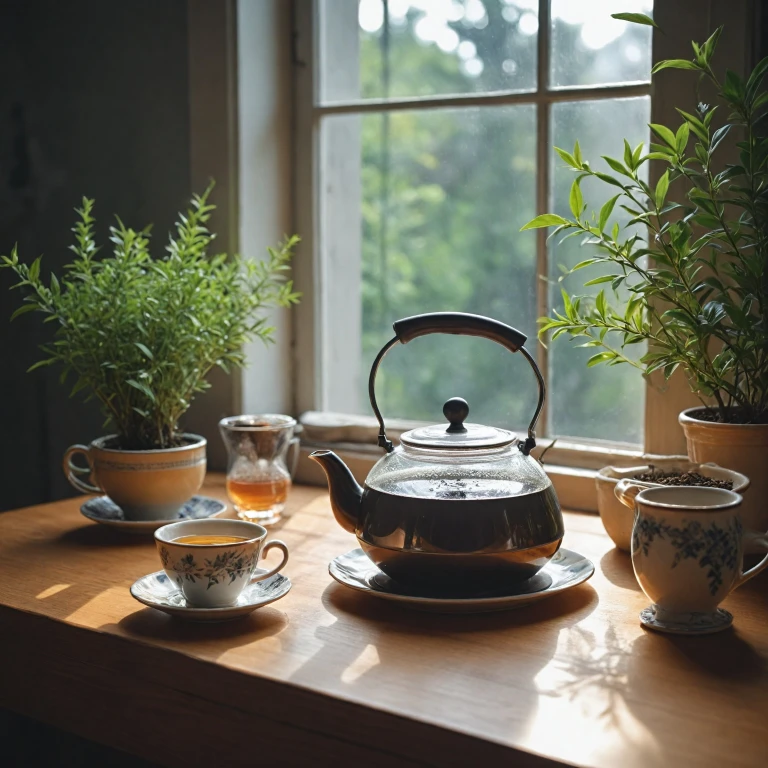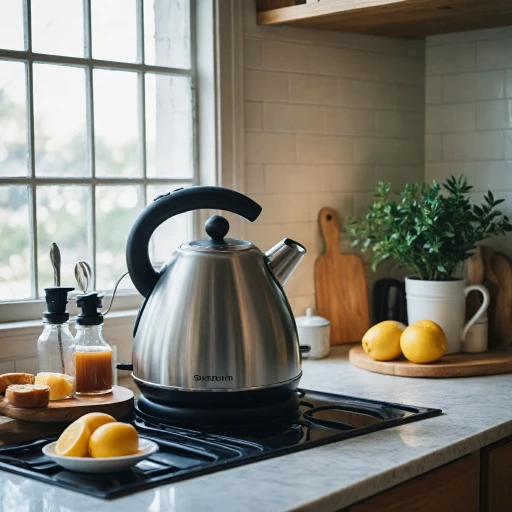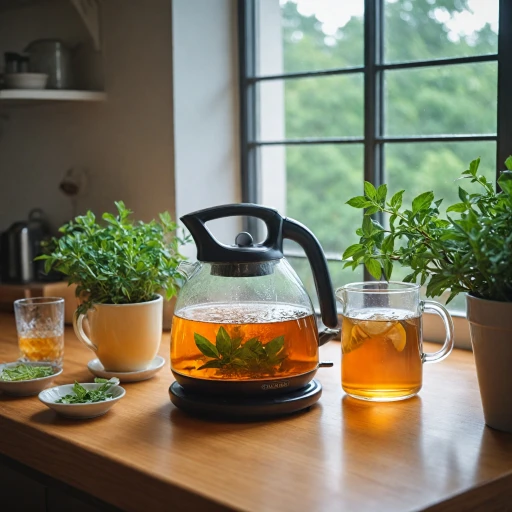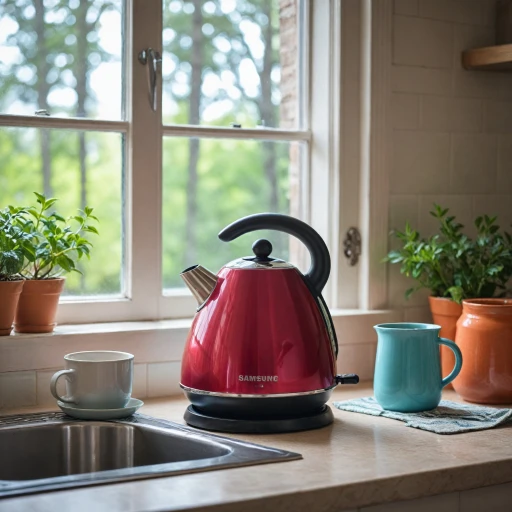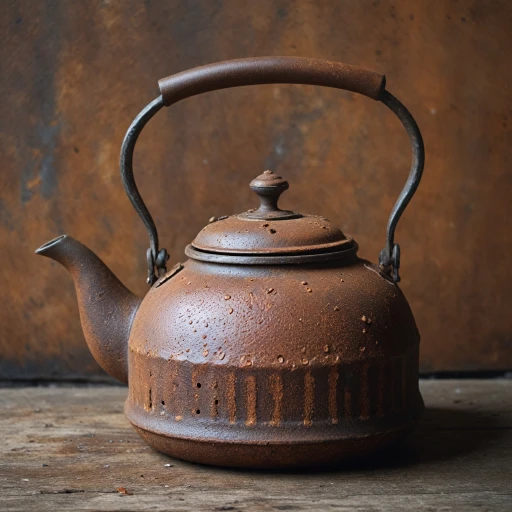
Understanding Your Electric Kettle
Getting to Know Your Electric Kettle
To make the most of your electric kettle, it's essential to first understand its features and functionalities. Electric kettles are designed to heat water quickly and efficiently, turning a once lengthy process into a matter of minutes. Whether you're preparing green tea or a classic cup of white tea, an electric kettle proves to be an invaluable kitchen tool. Knowing your kettle's capacity is a crucial step. Most electric kettles range between 1.5 to 2 liters. If you're aiming for a larger serving or catering for multiple people, opt for a larger model. For a personal cup of tea, a smaller kettle is usually sufficient.Temperature Settings and Your Kettle
Many of today's electric kettles come with adjustable temperature settings, allowing you to choose the ideal heat for different types of tea. This feature is particularly useful for tea enthusiasts aiming to create the perfect brew - from delicate white teas requiring lower temperatures to robust black teas needing a full boil. When choosing a kettle, look for one with preset buttons specifying different temperature options. This ensures you can consistently heat water to the ideal temperature required for each tea variety.Material and Safety Considerations
Electric kettles are made from an array of materials including stainless steel, glass, and plastic. Stainless steel and glass are often preferred for their durability and lack of flavor contamination, which means a purer taste for your hot water and tea. Safety features such as automatic shut-off when water reaches the boiling point, boil-dry protection, and heat-resistant handles contribute to a safer brewing experience. These features not only prevent accidents but also help in conserving energy. For more tips on perfecting your tea-making process with your electric kettle, explore our guide on crafting perfect iced tea with an electric kettle.Choosing the Right Water Temperature
Finding the Ideal Heat Level for a Perfect Brew
Making tea is an art that relies heavily on the temperature of the water used, which directly affects the flavors that are extracted from the tea leaves. Using an electric kettle, you have the ability to heat water to just the right temperature, ensuring a delightful cup every time.
Different types of tea require varying temperatures:
- White tea and green tea: These delicate teas are best brewed with water that's not at a full boil. Aim for a temperature between 165°F - 185°F (75°C - 85°C). This prevents the tea from becoming bitter and preserves its subtle flavors.
- Black tea: Requires hotter water, typically around 200°F - 212°F (93°C - 100°C). This temperature helps to release the tea's strong flavors and briskness.
- Herbal tea: With botanicals and herbs, a full rolling boil is often needed to extract all the beneficial compounds and flavors. Boil water completely to the highest settings.
It is crucial to note that every tea type has its own “sweet spot” when it comes to brewing, and electric kettles with temperature control settings are perfect for achieving this precision. When using the kettle, simply set it to the desired temperature, wait a few minutes for it to reach the mark, and then proceed to pour over your tea leaves in a teapot or another preferred vessel.
To understand the art of achieving the ideal temperature for each tea type, explore the art of brewing tea with electric kettles to transform your tea-making experience into a daily ritual of perfection.
Selecting the Perfect Tea Leaves
Discover the Best Tea Leaves for Your Brewing
When it comes to crafting a delightful cup of tea with your electric kettle, selecting the perfect tea leaves is crucial. The type of tea you choose can significantly influence the flavor, aroma, and overall experience.
Loose Leaf vs. Bagged Tea
The difference between loose leaf and bagged tea is notable. Loose leaf tea often provides a more robust flavor as the leaves can expand fully and unfurl in the water. This enhanced interaction with the hot water allows for better extraction of flavors and nutrients.
Understand Your Tea Leaves
If you're a fan of white tea or green tea, you'll want to pay special attention to the temperature at which you heat water. White tea, with its delicate leaves, thrives in water heated between 160°F to 185°F (71°C to 85°C). Conversely, green tea typically prefers water temperatures between 175°F and 185°F (79°C to 85°C).
Freshness Matters
The freshness of your tea leaves is a critical factor. Fresh leaves lead to a richer and more aromatic cup of tea. To preserve the quality of loose leaf teas, store them in an air-tight container away from light, heat, and moisture.
Tea Infuser or Teapot?
Using a tea infuser can be particularly handy when making tea directly in your cup or teapot. It allows you to easily remove the leaves once they've steeped to your desired strength, ensuring you don't over-extract the flavors.
In summary, understanding the specific needs and preferences of your chosen tea leaves can transform a simple kettle into a tool for mastery in brewing exceptional tea. Whether using a traditional kettle or exploring more modern electric kettles, taking the time to select the right type of tea can make all the difference in your tea-making journey.
Brewing Techniques for Different Teas
Mastering Brewing Techniques
When you’re ready to bring your cup of tea to life, the journey begins with understanding how different teas have their own unique brewing processes. Getting this step right can make a world of difference in enhancing the flavors and aromas. Here’s a guide to refining your brewing techniques: Green Tea:- Temperature: Heat the water to around 175°F (80°C). Going above this can result in a bitter taste due to the delicate leaves.
- Time: Steep for 1-2 minutes. Over-brewing can exaggerate any bitterness.
- Method: Fill your kettle to the appropriate level, let it come to the indicated temperature and pour over your tea infuser containing loose leaf tea.
- Temperature: Boil water to a full boil at 212°F (100°C).
- Time: Steep the leaves for about 3-5 minutes for a robust flavor.
- Method: Once your electric kettle brings the water to a rolling boil, pour over your tea leaves already placed in a teapot or directly in your cup tea.
- Temperature: Keep it gentle at approximately 160-185°F (70-85°C).
- Time: Steep for 2-3 minutes to ensure mild flavors are not lost.
- Method: For a subtle infusion, pour the slightly cooled water over your tea leaves to make tea that’s lightly aromatic.
- Temperature: Use boiling water at 212°F (100°C) as herbs can withstand the heat.
- Time: Give it a long steep of around 5-7 minutes to extract the full virtues of the herbs.
- Method: Fill and heat your kettle, then let your herbal selection steep in a teapot for several minutes.
Enhancing Your Tea Experience
Elevating Your Tea Ritual
Enhancing your tea experience goes beyond simply brewing the perfect cup of tea with your electric kettle. It's about savoring every step and experimenting to find what suits your taste best. Here are some simple yet effective ways to make your tea time more enjoyable:- Invest in Quality Equipment: A good electric kettle with variable temperature settings can make a significant difference in your tea preparation. Whether you're into white tea, green tea, or robust black teas, the right temperature is key for releasing the full flavor of your tea leaves.
- Use Fresh, Filtered Water: The quality of water can greatly affect the taste of your tea. For the best results, use fresh, filtered water in your tea kettle to ensure that your brew is free from any unwanted flavors or impurities.
- Experiment with Tea Types: Don't limit yourself to just one type of tea. Explore an array of loose leaf teas, from black to herbal infusions. Each type can create a different experience, adding variety to your daily routine.
- Consider the Vessel: The kind of cup or teapot you use can impact the overall experience. Some tea enthusiasts prefer glass teapots to watch the leaves unfurl, while others may enjoy the warmth of a ceramic cup.
- Add a Personal Touch: Personalize your tea by incorporating elements like a tea infuser for loose leaf teas. You can also customize flavors with a twist of lemon, a hint of honey, or a sprig of mint, depending on your preference.
- Mind the Time: Allowing the tea leaves enough time to steep is crucial. While some teas require just a couple of minutes, others might need more time. Find the sweet spot where the flavors are most vibrant but not overly bitter.
- Embrace the Moment: Ultimately, a peaceful environment can enhance the overall experience. Set aside a few minutes of your day to relax and enjoy the ritual of tea preparation and consumption.
Troubleshooting Common Issues
Solving Everyday Challenges with Your Electric Kettle
Even with the best techniques and right equipment, you might encounter a few challenges while using your electric kettle to make tea. Here are some practical solutions to help you troubleshoot common issues, ensuring that every cup of tea is a delightful experience.- The Kettle Isn’t Heating Water: If your kettle isn’t heating water properly, first check that it’s plugged in and switched on. Secondly, make sure the kettle, teapot, or base hasn’t been damaged. In some cases, mineral deposits from hard water can affect performance. Regular cleaning can help prevent this.
- Boiling Water Spills: Overfilling your electric kettle can lead to spillage when the water boils. To prevent this, fill the kettle to just below the maximum fill line. If your kettle has variable settings, ensure you’re using the right temperature for your tea to avoid vigorous boiling.
- The Taste or Smell Isn’t Right: If your tea tastes or smells off, consider the freshness of the tea leaves and the cleanliness of the kettle. Rinsing the kettle with a mix of vinegar and water can help eliminate residues and odors that might alter the taste.
- Temperature Control Issues: Many electric kettles come with adjustable temperature settings, essential for brewing different types of tea such as green or white. If it seems your kettle isn’t heating to the desired temperature, refer to the manual to recalibrate settings or consult a professional if the issue persists.
